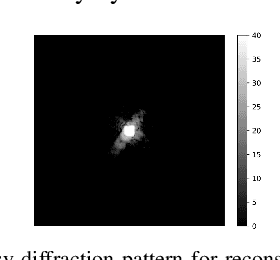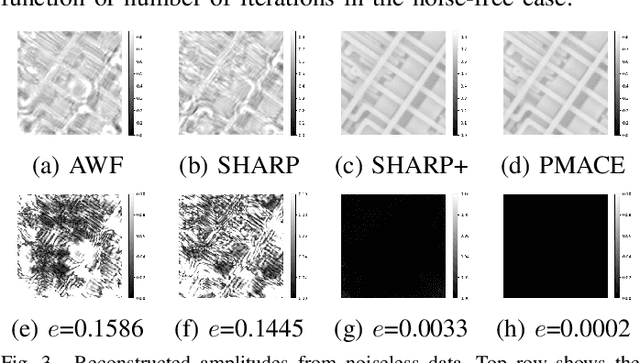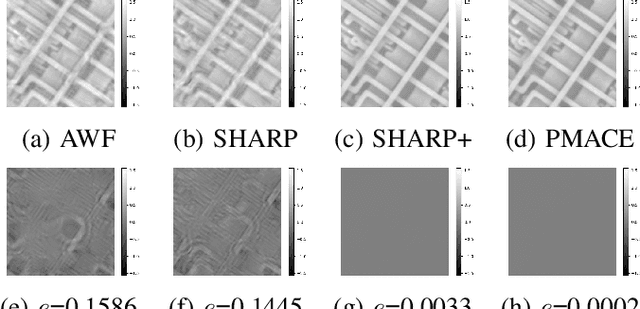Qiuchen Zhai
PS4PRO: Pixel-to-pixel Supervision for Photorealistic Rendering and Optimization
May 28, 2025Abstract:Neural rendering methods have gained significant attention for their ability to reconstruct 3D scenes from 2D images. The core idea is to take multiple views as input and optimize the reconstructed scene by minimizing the uncertainty in geometry and appearance across the views. However, the reconstruction quality is limited by the number of input views. This limitation is further pronounced in complex and dynamic scenes, where certain angles of objects are never seen. In this paper, we propose to use video frame interpolation as the data augmentation method for neural rendering. Furthermore, we design a lightweight yet high-quality video frame interpolation model, PS4PRO (Pixel-to-pixel Supervision for Photorealistic Rendering and Optimization). PS4PRO is trained on diverse video datasets, implicitly modeling camera movement as well as real-world 3D geometry. Our model performs as an implicit world prior, enriching the photo supervision for 3D reconstruction. By leveraging the proposed method, we effectively augment existing datasets for neural rendering methods. Our experimental results indicate that our method improves the reconstruction performance on both static and dynamic scenes.
Ptychography using Blind Multi-Mode PMACE
Jan 11, 2025Abstract:Ptychography is an imaging technique that enables nanometer-scale reconstruction of complex transmittance images by scanning objects with overlapping illumination patterns. However, the illumination function is typically unknown, which presents challenges for reconstruction, especially when using partially coherent light sources. In this paper, we introduce Blind Multi-Mode Projected Multi-Agent Consensus Equilibrium (BM-PMACE) for blind ptychographic reconstruction. We extend the PMACE framework for distributed inverse problems to jointly estimate the complex transmittance image and multiple, unknown, partially coherent probe functions. Importantly, our method maintains local probe estimates to exploit complementary information at multiple probe locations. Our method also incorporates a dynamic strategy for integrating additional probe modes. Through experimental simulations and validations using both synthetic and measured data, we demonstrate that BM-PMACE outperforms existing approaches in reconstruction quality and convergence rate.
PtychoDV: Vision Transformer-Based Deep Unrolling Network for Ptychographic Image Reconstruction
Oct 11, 2023Abstract:Ptychography is an imaging technique that captures multiple overlapping snapshots of a sample, illuminated coherently by a moving localized probe. The image recovery from ptychographic data is generally achieved via an iterative algorithm that solves a nonlinear phase-field problem derived from measured diffraction patterns. However, these approaches have high computational cost. In this paper, we introduce PtychoDV, a novel deep model-based network designed for efficient, high-quality ptychographic image reconstruction. PtychoDV comprises a vision transformer that generates an initial image from the set of raw measurements, taking into consideration their mutual correlations. This is followed by a deep unrolling network that refines the initial image using learnable convolutional priors and the ptychography measurement model. Experimental results on simulated data demonstrate that PtychoDV is capable of outperforming existing deep learning methods for this problem, and significantly reduces computational cost compared to iterative methodologies, while maintaining competitive performance.
Projected Multi-Agent Consensus Equilibrium (PMACE) for Distributed Reconstruction with Application to Ptychography
Mar 28, 2023Abstract:Multi-Agent Consensus Equilibrium (MACE) formulates an inverse imaging problem as a balance among multiple update agents such as data-fitting terms and denoisers. However, each such agent operates on a separate copy of the full image, leading to redundant memory use and slow convergence when each agent affects only a small subset of the full image. In this paper, we extend MACE to Projected Multi-Agent Consensus Equilibrium (PMACE), in which each agent updates only a projected component of the full image, thus greatly reducing memory use for some applications.We describe PMACE in terms of an equilibrium problem and an equivalent fixed point problem and show that in most cases the PMACE equilibrium is not the solution of an optimization problem. To demonstrate the value of PMACE, we apply it to the problem of ptychography, in which a sample is reconstructed from the diffraction patterns resulting from coherent X-ray illumination at multiple overlapping spots. In our PMACE formulation, each spot corresponds to a separate data-fitting agent, with the final solution found as an equilibrium among all the agents. Our results demonstrate that the PMACE reconstruction algorithm generates more accurate reconstructions at a lower computational cost than existing ptychography algorithms when the spots are sparsely sampled.
Projected Multi-Agent Consensus Equilibrium for Ptychographic Image Reconstruction
Dec 08, 2021



Abstract:Ptychography is a computational imaging technique using multiple, overlapping, coherently illuminated snapshots to achieve nanometer resolution by solving a nonlinear phase-field recovery problem. Ptychography is vital for imaging of manufactured nanomaterials, but existing algorithms have computational shortcomings that limit large-scale application. In this paper, we present the Projected Multi-Agent Consensus Equilibrium (PMACE) approach for solving the ptychography inversion problem. This approach extends earlier work on MACE, which formulates an inversion problem as an equilibrium among multiple agents, each acting independently to update a full reconstruction. In PMACE, each agent acts on a portion (projection) corresponding to one of the snapshots, and these updates to projections are then combined to give an update to the full reconstruction. The resulting algorithm is easily parallelized, with convergence properties inherited from convergence results associated with MACE. We apply our method on simulated data and demonstrate that it outperforms competing algorithms in both reconstruction quality and convergence speed.
 Add to Chrome
Add to Chrome Add to Firefox
Add to Firefox Add to Edge
Add to Edge